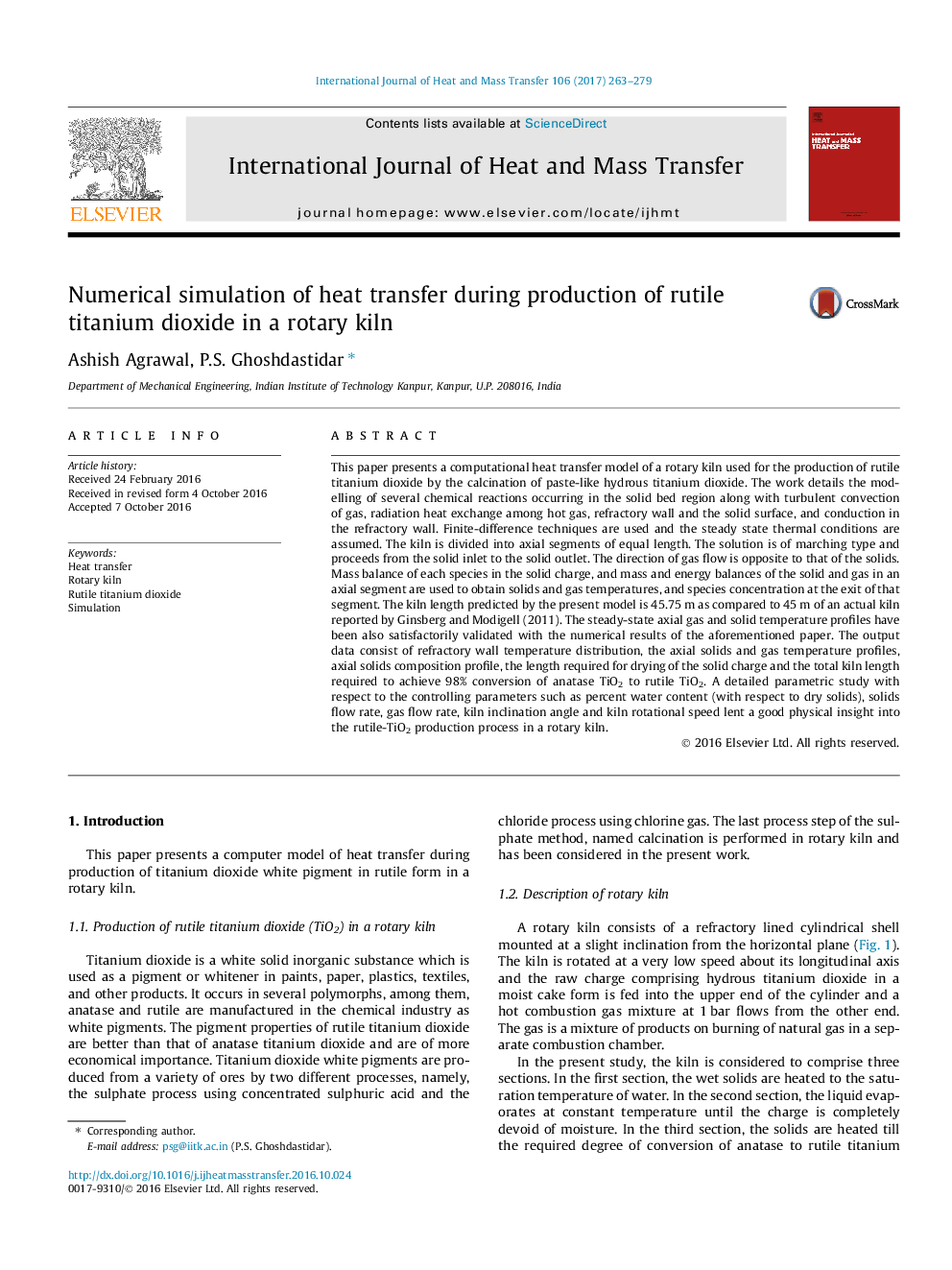| Article ID | Journal | Published Year | Pages | File Type |
|---|---|---|---|---|
| 4994769 | International Journal of Heat and Mass Transfer | 2017 | 17 Pages |
Abstract
This paper presents a computational heat transfer model of a rotary kiln used for the production of rutile titanium dioxide by the calcination of paste-like hydrous titanium dioxide. The work details the modelling of several chemical reactions occurring in the solid bed region along with turbulent convection of gas, radiation heat exchange among hot gas, refractory wall and the solid surface, and conduction in the refractory wall. Finite-difference techniques are used and the steady state thermal conditions are assumed. The kiln is divided into axial segments of equal length. The solution is of marching type and proceeds from the solid inlet to the solid outlet. The direction of gas flow is opposite to that of the solids. Mass balance of each species in the solid charge, and mass and energy balances of the solid and gas in an axial segment are used to obtain solids and gas temperatures, and species concentration at the exit of that segment. The kiln length predicted by the present model is 45.75Â m as compared to 45Â m of an actual kiln reported by Ginsberg and Modigell (2011). The steady-state axial gas and solid temperature profiles have been also satisfactorily validated with the numerical results of the aforementioned paper. The output data consist of refractory wall temperature distribution, the axial solids and gas temperature profiles, axial solids composition profile, the length required for drying of the solid charge and the total kiln length required to achieve 98% conversion of anatase TiO2 to rutile TiO2. A detailed parametric study with respect to the controlling parameters such as percent water content (with respect to dry solids), solids flow rate, gas flow rate, kiln inclination angle and kiln rotational speed lent a good physical insight into the rutile-TiO2 production process in a rotary kiln.
Related Topics
Physical Sciences and Engineering
Chemical Engineering
Fluid Flow and Transfer Processes
Authors
Ashish Agrawal, P.S. Ghoshdastidar,
